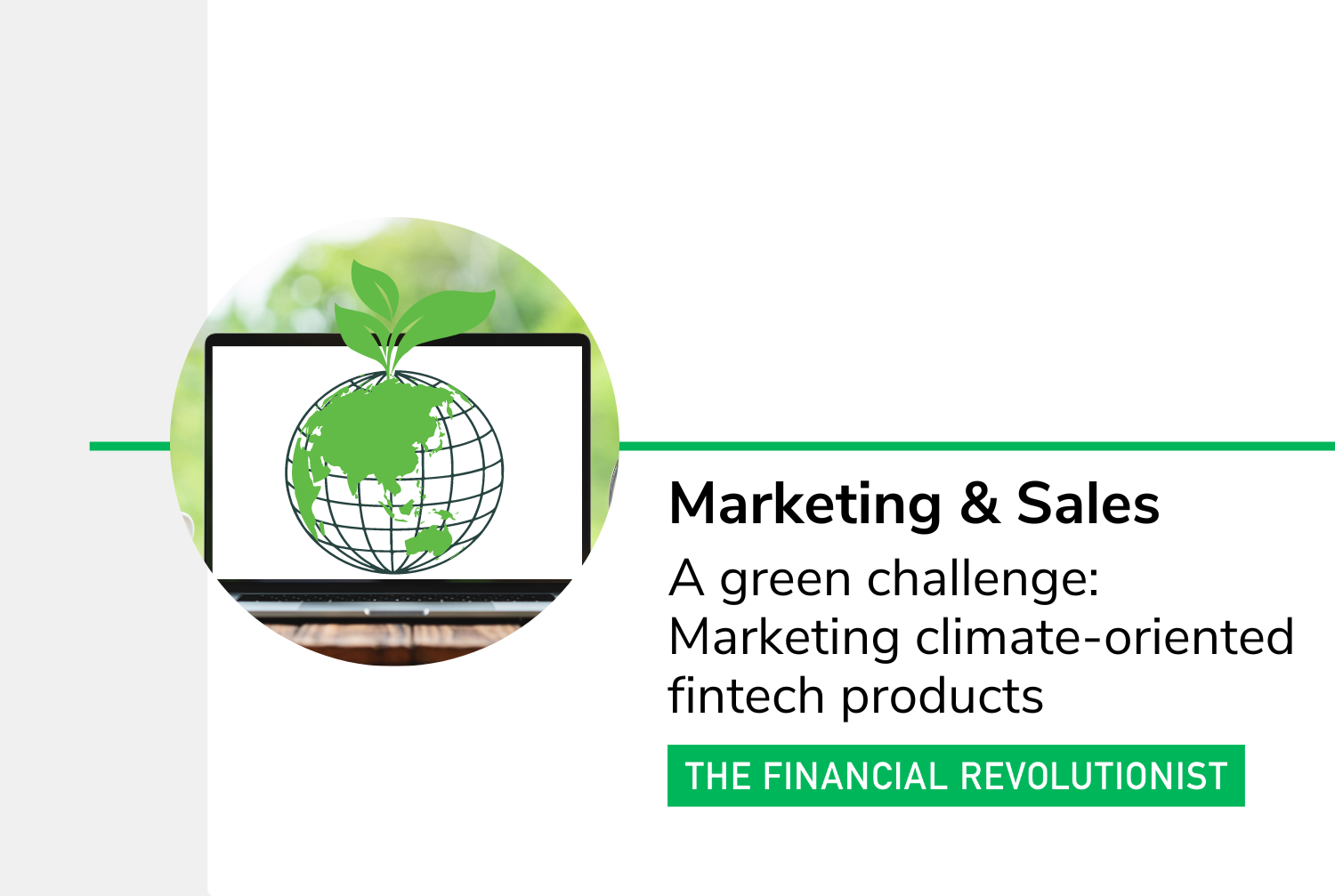A green challenge: Marketing climate-oriented fintech products
/Climate-focused fintechs have seen investment and interest in their products scale significantly over the past ten years. This subsector raised more than $1.2B in 2021—and, despite medium-term headwinds, will no doubt continue to grow. While this success is partially the result of growing consumer concern for the environment as well as private-sector climate pledges, these fintechs have also played a keystone role in their own success through innovative sales and marketing strategies. They’ve confronted unprecedented obstacles to confront new needs, raising and addressing new sales and marketing challenges along the way.
Climate fintechs working in energy financing, for example, have had to identify relatively new customer segments that straddle business and consumer categories. Rather than marketing to households or standalone brick and mortar businesses, green power financing companies have had to reach out to apartment buildings, property owners, developers, and other institutions that straddle above the individual household or business. Given that there are more stakeholders involved, such sales pipelines can be slower to close, requiring more high-touch strategies.
At the same time, according to Sopnendu Mohanty, Chief FinTech Officer of the Monetary Authority of Singapore, green fintechs and others working in the climate finance space have to be careful about pigeon-holing their products and sales. “The numbers look big and the predictions are attractive, but it’s still at an early stage,” he said in an interview with McKinsey. “If these solutions can apply to a wider sector, then we will definitely see exciting unicorns coming out of this space.”
Coupled with new sales strategies—balancing both identifiable, niche markets as well as potentials for growth—are the challenges of literally defining new markets. These innovative fintechs have to both market their USP as well as explain what their product does. Crucially, this requires differentiating their products from existing solutions while also reassuring potential clients that these innovations are safe and trustworthy. Robo-advisors’ climate-focused investment funds, for instance, set themselves apart by highlighting the proprietary work going into their wealth-management products, while also arguing that these portfolios are promising sources of long-term value.
Perhaps unsurprisingly for these future-focused fintechs, the long-term implications of a flourishing green finance space are another source of concern. Seeing what happened to carbon offset markets—many of which collapsed once derivative traders entered the scene—has been a lesson in how not to grow a sector. Greenwashing by larger incumbents is another possibility. “There’s a real risk that bad-faith competitors could tarnish the credibility of legitimate green brands, making consumers cynical towards the space as a whole,” said Eleanor Metcalf at Tred.
Ultimately, green fintechs have to establish moats around their work, define their billion-dollar ideas—and, for the sake of the planet, build welcoming sectors that can accommodate competition and thrive.





